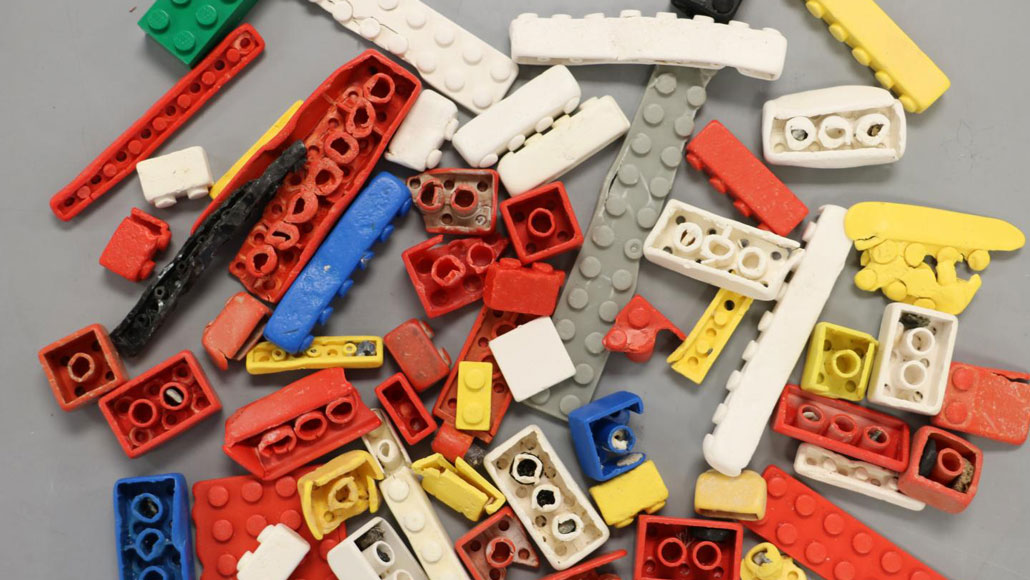
If you’ve ever had the misfortune of stepping on a Lego, you know the plastic building blocks have absolutely no give. Now, scientists have discovered another unpleasant consequence of the toys’ indestructibility: A single Lego could take hundreds of years to break down in the ocean.
Earth’s oceans are littered with plastic of all kinds (SN: 11/13/19). But estimating how long that trash takes to disintegrate in seawater is often a challenge, because it’s difficult to date fragments of debris with unknown origin. But it’s fairly easy to identify a piece of Lego by its distinct shape, says Andrew Turner, an environmental scientist at the University of Plymouth in England. And because the chemical additives used to make Legos have changed over time, the composition of each brick contains clues about when it was made.
Turner and colleagues used an X-ray fluorescence spectrometer to measure the chemical compositions of washed-up Lego blocks, which had been collected by beach cleanup volunteers in Cornwall, England, since 2010. Using the blocks’ chemical fingerprints, the team identified bricks manufactured around the 1970s. One key chemical indicator was cadmium, used to make bright yellow and red pigments from the early 1970s until the early 1980s, when it was phased out due to toxicity.
The researchers assume the beached Legos were lost to sea around the time of their purchase. To gauge how worn down the beached Legos got during 30 to 40 years at sea — due to factors like abrasive sediment and exposure to sunlight — the researchers used their X-ray fluorescence measurements to match weathered Legos with pristine versions of the same bricks kept in collections since the 1970s.
Across 14 pairs of matching Legos, the weathered versions had 3 to 40 percent less mass than their mint-condition counterparts. Based on those measurements, it would take an estimated 100 to 1,300 years to completely break down a single Lego brick, researchers report in the July 2020 Environmental Pollution.
Prior research has shown that plastic water bottles take decades to break down in the ocean. But since many plastic components used to make electronics and other consumer products are closer in thickness and sturdiness to Lego bricks than water bottles, Turner suspects the several-hundred-year timescale may be more representative of plastic degradation overall in seawater.
Source: Heart - www.sciencenews.org



